Watch Byron Lazine and Nicole White give a real estate agent’s perspective on industry-related topics. This week, they’ll discuss buyer’s agent behavior that needs to stop, the importance of high-speed internet and a new design trend that’s popping up.
Blog
IPhone video content app enables multiple devices to broadcast on a single stream and add rich graphics on the fly. Sorry Android users — this one is iPhone-exclusive.
When it comes to high-net-worth markets, referrals are one of the only paths for accessing top clients. As an agent, what mistakes are you making when asking for referrals? Here’s how to diagnose the problems and a few ways to fix them.
Robot vacuum technology has advanced significantly over the years, and there are now a lot of options to choose from. Here are the perks and drawbacks of the most popular devices at every price point.


14 Mirimar Ave, Bronte. NSW Real Estate.
It passed in on the weekend on a vendor bid of $16.5m, but the amazing Bronte home of cancer specialist GenesisCare founder Dan Collins and his wife, Cassandra has now sold.
PPD Real Estate principal Alexander Phillips couldn’t comment on the sale price of the five-bedroom, four-bathroom home with five-car garage at 14 Mirimar Avenue.
“The vendors are very happy with the price, and are looking forward to moving to Los Angeles,” Phillips told the Wentworth Courier exclusively.
Along with a PPD Instagram post, another has been posted from Ray White TRG advising of the sale. Sources said TRG agent Evan Williams was also linked to the deal.
MORE:
F45 Exec lists $9m Bellevue Hill mansion
Art dealer’s $1m discount in Bellevue Hill

The heated saltwater pool.

Sitting high on the hill.
With its amazing ocean views, lavish finishes, lift and five-car garage, it was evident the home, which had three registered parties at last Saturday’s private auction, wasn’t going to be hanging around on the market too long.
There’d been three registered parties on Saturday, with one an entrepreneur who’d come back for a second look at the property on auction day.
Phillips wasn’t quoting a guide during the short campaign, but was using the suburb record of $17.9m — set on July 7 — and last June’s previous top of $16.8m as reference points. There’d been hopes this home may beat the record. But the rumour on Saturday was that the reserve had been set at around $17m.

Ocean panorama

Views in every direction.
At Saturday’s auction, when auctioneer Clarence White called for bids, someone tried to make a lowball offer, which was rejected.
Dan and Cassandra Collins had purchased the home for $14.5m just four years ago.
If anything was going to beat the price that green energy entrepreneur Carl Prins and his wife, Kate, paid in Gardyne Ave on July 7 in an off-market deal — also through Phillips with Ray White TRG’s Oliver Lavers — this had looked to be it.
It truly is a special home, with far superior views than the Gardyne St property.
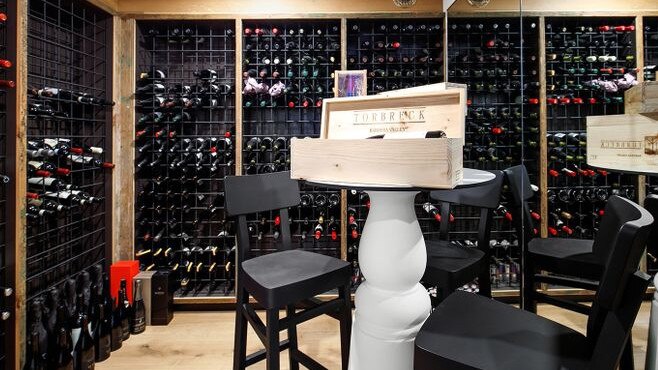
The wine cellar had room for 706 bottles.

The five-car garage was a major attraction.
For the Wentworth Courier House of the Week, Cassandra confirmed she and her husband had just finished 18 months of renovations, but are now moving to the US after GenesisCare’s $1.6 billion purchase of 200 cancercare centres there.
We’ve made it our dream home, but of course nothing is ever really your forever home” she’d said.
The Mirimar Avenue home was previously owned by Peter Scutt — founder and CEO of Mable, an online service to help the aged or disabled find support workers — and his wife, Nadia Jacob, the founder and director of CrEight, which specialises in residential design.
They rebuilt an old apartment block — bought for $3m in 2013 — to create this incredible new home that was snapped up by Collins in an off-market deal via Pauline Goodyer of Goodyer, who’s now selling Scutt and Jacob’s next home in 22 Thompson Street with a $14m-$15m guide.
The post Bronte home of GenesisCare founder Dan Collins and his wife, Cassandra, sells for about $16.5m appeared first on realestate.com.au.
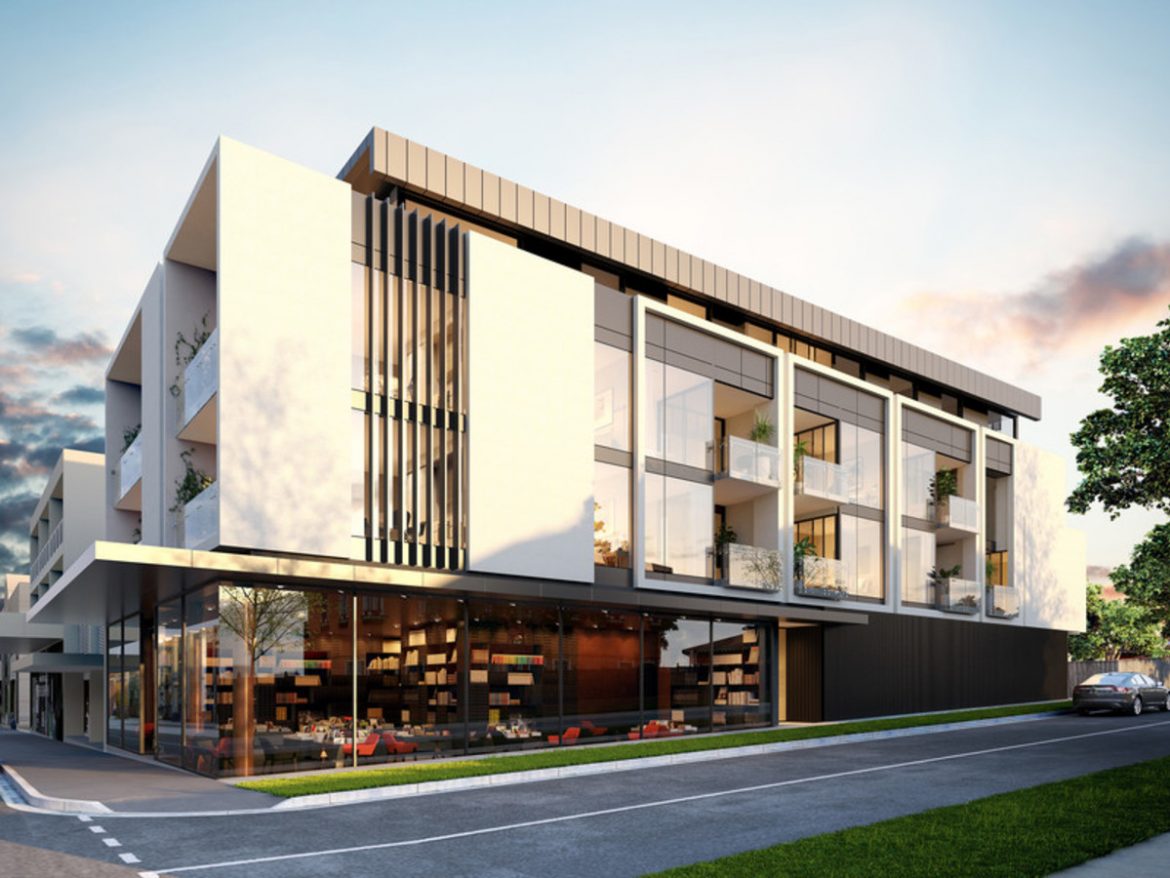
From their interior decoration and the style of architecture to the layout of utility spaces such as the kitchen and bathroom, houses often reflect changes in society and this has never been more apparent than right now.
Set against the backdrop of massive changes brought on by the global health crisis, it’s clear that new home buyers are at the forefront of change when it comes to post-pandemic home design. From floorplans and the installation of additional safety and hygiene features to a new emphasis on more time spent at home, it’s clear that the homes of the future will be vastly different to those before.
While we’re still in the early phases, trends have started to emerge and the first big one, according to industry experts, is that liveability has never been more of a focus.
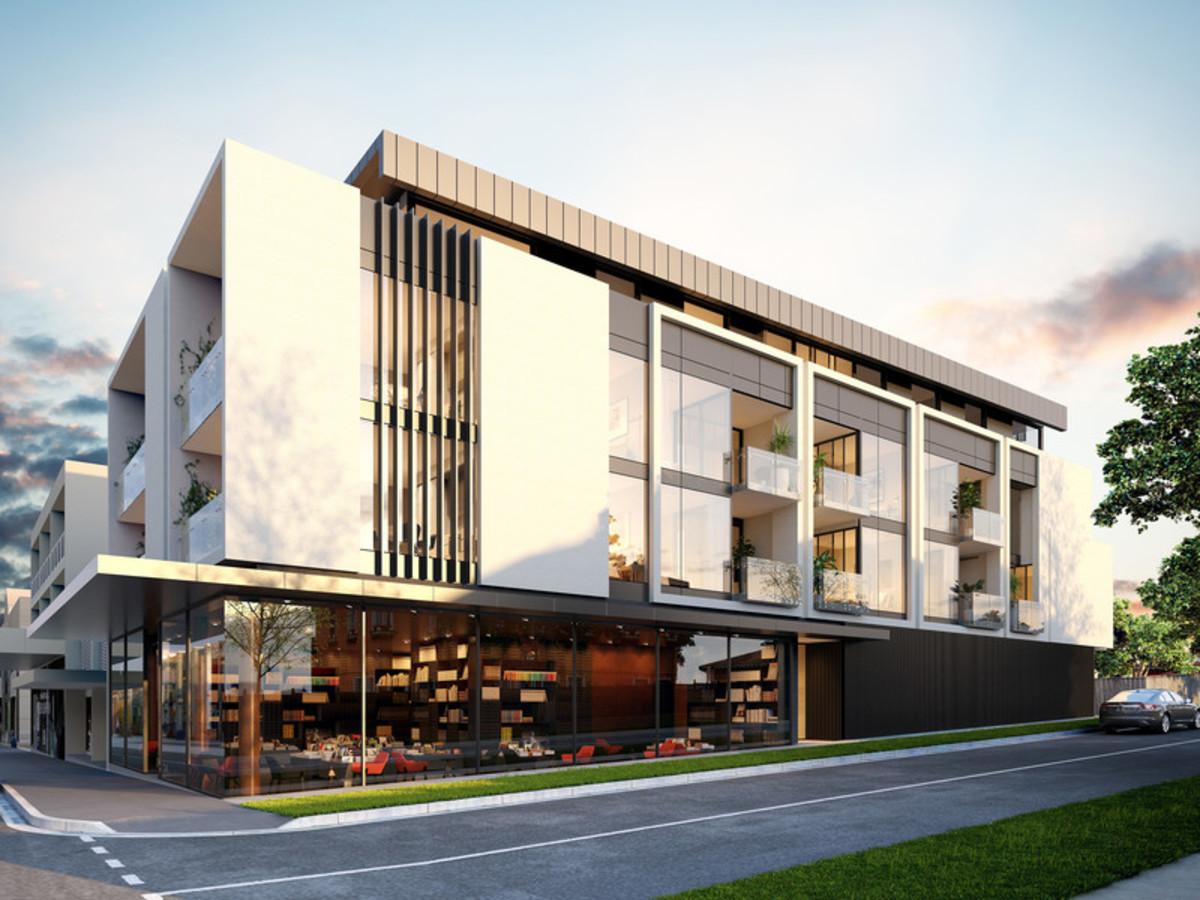
It’s likely that homes built in a post-COVID world will be vastly different to those before. Picture: realestate.com.au
While it’s true that owner-occupiers now represent a much larger part of the new home buyer market, it’s also apparent that established investors understand the need to create housing that’s comfortable, safe and convenient for the long-term benefit of its residents.
This has been driven by global market conditions due to COVID-19 and job security issues, explained David Milton, managing director of residential projects at CBRE.
“With the drop in volume, buyers now have more time to make a very considered approach to their property investment,” Mr Milton said.
Where once there was an ‘investment-grade’ style of home, tailored towards investors getting the most bang for their buck in the shortest amount of time, buyers now have more time to make better decisions around the liveability of a home, he explained.
“We were starting to see many more owner-occupiers in the market, even before the pandemic, but this has really ramped up lately. We’ve also found that the established investors, who are looking to buy amid COVID, also really care about facilities that are being considered and how the tenant will live for the long term.”
Michael Lang from Castran Gilbert said there has been around five years of growth in six months within the industry during the pandemic.
“We were always going to get there but COVID has accelerated things, including the need for everything to be online yesterday,” Mr Lang said.
“For people thinking that we’re going to get back to normal, there is no normal now – everyone has to adapt and it’s not a bad thing. Change is slow until it happens, I always say.”
Top 12 ‘wellness’ features new home buyers want
Post-COVID trends are still emerging, but the most desirable features in December and January 2019 show that new home buyers were already concerned with wellness and security, indicating that this will likely continue.
Here are the top five themes broken down:
1. Technology
Mr Milton said that while many apartment buildings will start to be geared towards swipe card access, with no need to push buttons or touch any of the common surfaces, technology inclusions will have to be cost-effective as this is one of the most important deciding factors for purchasers.
“We like to think that technology will allow us to live like we’re in a spy movie, but costs will need to be kept down,” he remarked.
Jayde Pezet, director at KM Sales & Marketing on the Gold Coast, said while automation and smart homes are popular topics, technology these days plays a big part in how safe people feel in a building.
With domestic travel set to be huge once state borders are relaxed, coupled with a predicted spike in enquiries from interstate residents wanting to make second homes further north, destinations like Queensland’s Gold Coast could be hotspots for holiday makers, which means many buildings will be grappling with keeping permanent residents safe while also being able to service short-stay tourists.
The creators of one of KM Gold Coast’s developments, Flow, have devised an online booking system, which is completely contact free and is aimed at maximising the usability of the building while keeping residents safe.

Flow is an apartment building designed to keep residents safe. Picture: realestate.com.au
2. Working from home
Mr Lang said buyers are, without a doubt, looking for quality spaces to work, a selling feature he thinks will only intensify.
“I’ve dubbed it the ‘Zoom Room’,” he said. “Back in the day, your study would be filled with encyclopaedias (that you didn’t need) and shelves filled with books and manuals, but this went out of fashion when people started working on laptops.
“Now they’ve come back in because we need to have a room that we’re doing a lot more concentrated work in.
“These are spaces where we can do a higher level of work, where you can attend meetings and not see clothes hanging up or dirty laundry. Buyers are looking for nice natural light in these spaces and a bit of quiet.”
Mr Milton added that in the smaller homes, where residents are content with working from the kitchen table, utility spaces can be added so that work equipment can be quickly and easily stowed away, making for a smarter, more flexible home.

There’s a renewed priority for home offices and studies as more people work from home than ever before. Picture: Getty
3. Outdoor features
Wellness amenities were becoming more popular before COVID hit, according to Mr Lang, and there has been a steady move away from “bling” features, like pools and gyms, in favour of outside walking spaces.
“Pools and gyms were the bling that attracted buyers for a time, but soon they realised they weren’t using them that much and paying exorbitant amounts for them, and they were crowded,” he explained.
Especially in the time of COVID, where hygiene is important, people are less inclined to want to share gym equipment when they can just purchase their own, said Mr Lang.
Mr Milton added that balcony spaces, pleasant views and convenient locations are now more important to buyers as they consider the reality of needing to spend more time in their homes.
“Buyers will be drawn to things like a balcony with a view, that doesn’t suffer privacy issues from neighbours.”
Convenience and comfort are now the vital deciding factors for purchasers, according to Mr Milton.
4. Hygiene
If nothing else, 2020 has been a lesson in hygiene and the housing market is embracing this trend as residents try to maximise safety.
Mr Pezet says hygiene measures have become more stringent with developments embracing the use of beautiful sanitary devices in lifts and all common areas.
Especially in residences that cater to both long and short-term residents, he said the need to protect every resident and allow for sanitary habitation will become paramount.

Housing developments of the future will enable residents to have contact-free delivery. Picture: Castran Gilbert
5. Shared amenities
Shared amenities are changing in the time of COVID-19, too, with cool rooms and storage for grocery deliveries, contact-free parcel drop off facilities and a commercial-grade business working space all becoming priorities for some buyers.
Mr Pezet said his company has recut floorplans on projects to turn third bedrooms and multi-purpose rooms into a home office that can house printers and other equipment. Even mini business centres are being incorporated into the common areas of new builds, similar to co-working spaces with high-level printing and photocopy facilities available for residents.
The post New home buyers are changing the face of future housing developments appeared first on realestate.com.au.


No. 76 Kambala Road, Bellevue Hill, has a $9.25m price guide.
The former Morgan Stanley banker turned F45 executive, Damien Rayner, and his investment manager wife Arabella have listed their Bellevue Hill mansion for sale with a $9.25m price guide.
The four-bedroom, five-bathroom home with double garage on a 506 sqm block at 76 Kambala Road is with Pillinger principal Brad Pillinger in an expressions of interest campaign.
The couple, who are understood to be looking to buy an even larger home, managed to flee Los Angeles, where Damien was the president of sales and business development for the gym franchise for its planned US expansion, ahead of the pandemic travel restrictions.
MORE:
Banker’s $7.8m Darling Point dazzler
Epic mansion comes with 14-car garage

Comfort zone.

The well-appointed kitchen.
They’re now holed up at the Palm Beach holiday home of parents, and by the look of Instagram posts are having plenty of family fun.
They’d rented out the Kambala Road home at $3500 a week during their LA sojourn, but if they don’t get their price they’d be quite happy to move back in themselves.
And why wouldn’t they be.
Set in private landscaped grounds and with a pool, the luxurious two-storey residence is designed to maximise natural light and offers an attractive indoor/outdoor lifestyle.
There are both formal and casual living areas that flow to entertainment terraces.

The master bedroom …
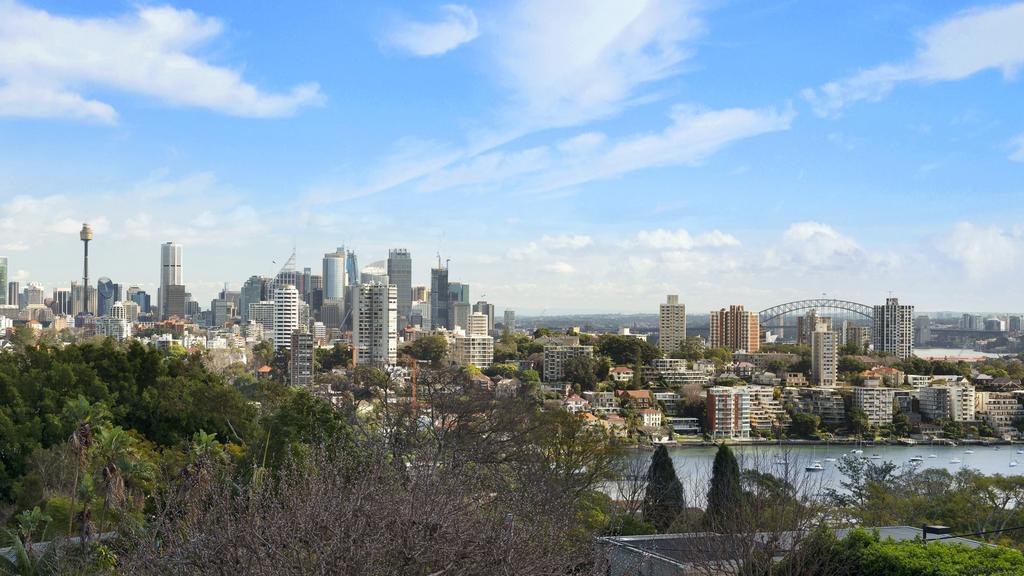
… And the terrace with full city, Bridge and harbour views.
The upper-level bedrooms open to balconies and the master has a separate study, internal dressing room, spacious ensuite and a private balcony with full city, Bridge and harbour views.
The secondary bedrooms also have north facing sun-drenched balconies and an ensuite each.
And families will appreciate that there are four separate living areas.
The gas kitchen has direct access to both internal dining areas, there’s plenty of storage and an additional sunny courtyard.
The double garage has internal access.
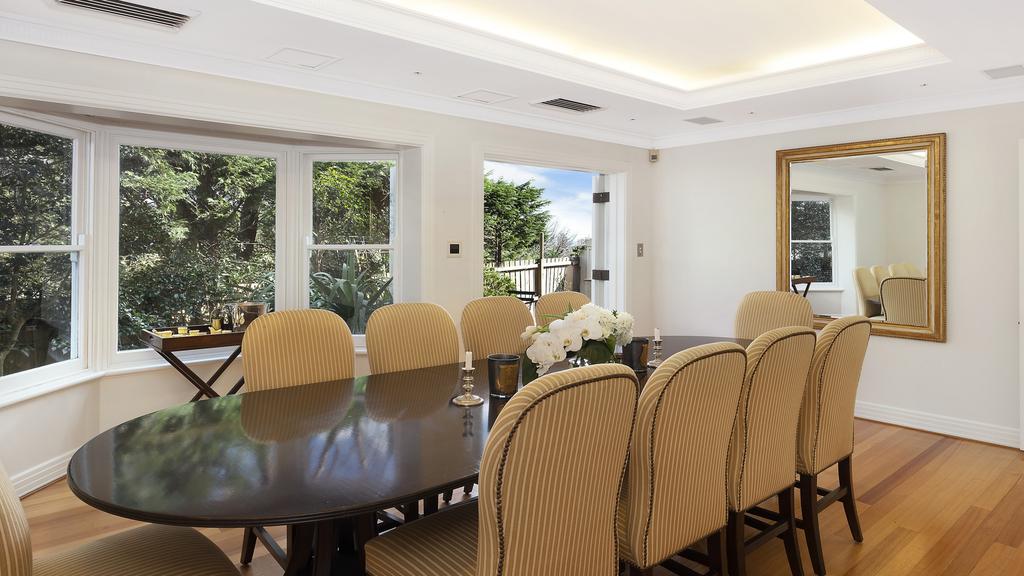
Formal dining.

There are 5.5 stylish bathrooms.
The property is located in the very best section of Kambala Road with outstanding views.
Pillinger said: “It’s simply impossible — apart from no 76 — to find a manageable quality affordable home in the very best part of Bellevue Hill in a primary street enjoying much-sought outlooks.”
F45 co-founder Rob Deutsch also had his eastern suburbs home up for sale briefly in April with hopes of beating the Bronte $11.2m price record, but pulled it from sale shortly after and has apparently now decided to keep it.
The post F45 exec Damien Rayner lists $9.25m Bellevue Hill mansion appeared first on realestate.com.au.

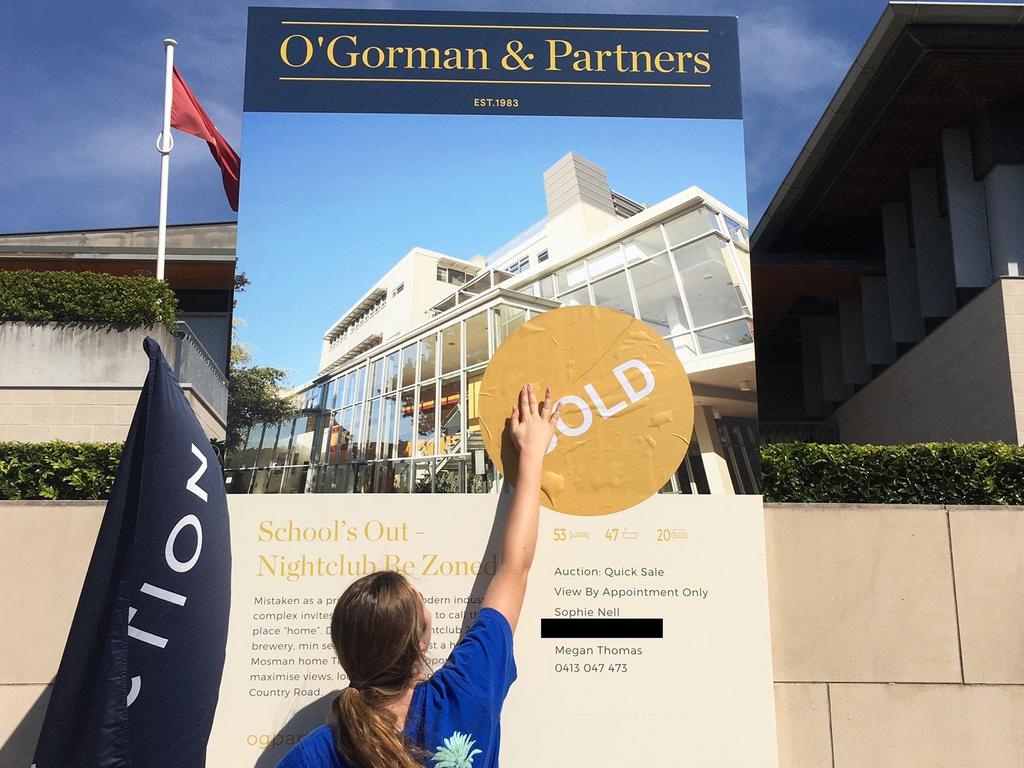
The sign at the centre of the Queenwood School for Girls Muck Up Day prank.
A creative group of Queenwood Girls School students have eschewed the traditional egging and shaving cream gags for a hilarious Muck Up Day prank.
Led by year 12 student Sophie Nell, they ‘listed’ their school’s 2452sqm campus in Mandolong Rd, Mosman, for auction.
MORE: Rosselli-designed beauty sells in seven days
Hot pink Versace palace has quirky ‘zebra’ room
In their marketing material they claimed the campus had been rezoned for a nightclub, brewery and minimum security prison.
They reportedly set a price guide of $150 million and even ran an open inspection and private auction, although the results have not been disclosed.
Sophie enlisted the help of neighbour Megan Thomas, a sales executive at O’Gorman & Partners in Mosman, to give the prank some extra polish.

O’Gorman & Partners sales executive Megan Thomas (left) with student Sophie Nell and their fake for sale sign.
With the help of the agent, they erected a signboard on Wednesday with details of the forthcoming auction. It read:
|
School’s Out – Nightclub Re Zoned Mistaken as a prison, this postmodern industrial complex invites new family owners to call this place ‘home’. DA approved for nightclub 24/7, brewery, min security prison, or just a humble Mosman home. This is a brilliant opportunity to maximise views, location & only moments to Country Road. Auction: Quick Sale View By Appointment Only 53 bedrooms 47 bathrooms 20 car spaces |
Ms Thomas said the sold sticker went on the signboard on Thursday, before the board was removed today.
“It was only up for a bit over 48 hours,” she said.

The sold sticker goes up.
But in the three days it was up, she received as many calls from developers legitimately interested, if a tad confused, in the opportunity.
“When I explained, it was all taken in very good humour,” Ms Thomas said. “It went down well – we never had any negative feedback.”
Ms Thomas said the students paid for the $275 signboard and helped with the design. They also sought permission from the school, she said.
“They were really good about it,” she said. “I was really pleased to see that the school were such good sports and approved it. I love a good prank and it really did lighten the mood. And in these times with COVID we really need that.”
SIGN UP HERE FOR THE NSW REAL ESTATE NEWSLETTER
The post Private school girls ‘sell’ campus in creative Muck Up Day prank appeared first on realestate.com.au.

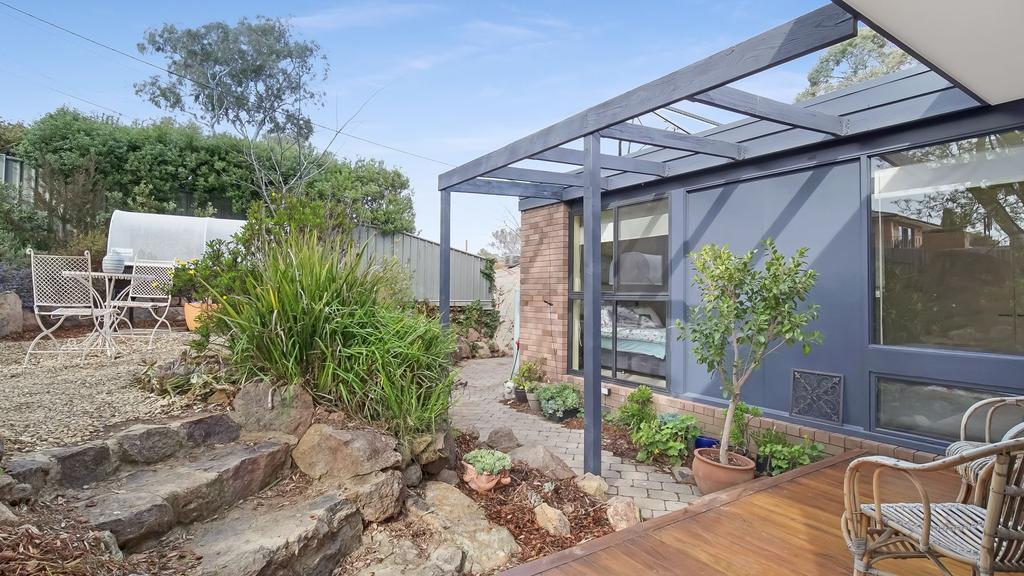
No. 29 Waite St in Farrer is for sale.
You might find yourself humming John Williamson’s iconic tune Give Me a Home Among the Gum Trees when you set foot in this peaceful piece of paradise in Farrer.
Designed by renowned Canberra architect Roger Pegrum, the home at 29 Waite Street opens out to a private deck surrounded by a stunning natural landscape including towering trees and a rockery with views across Isaccs Ridge and Mount Taylor.
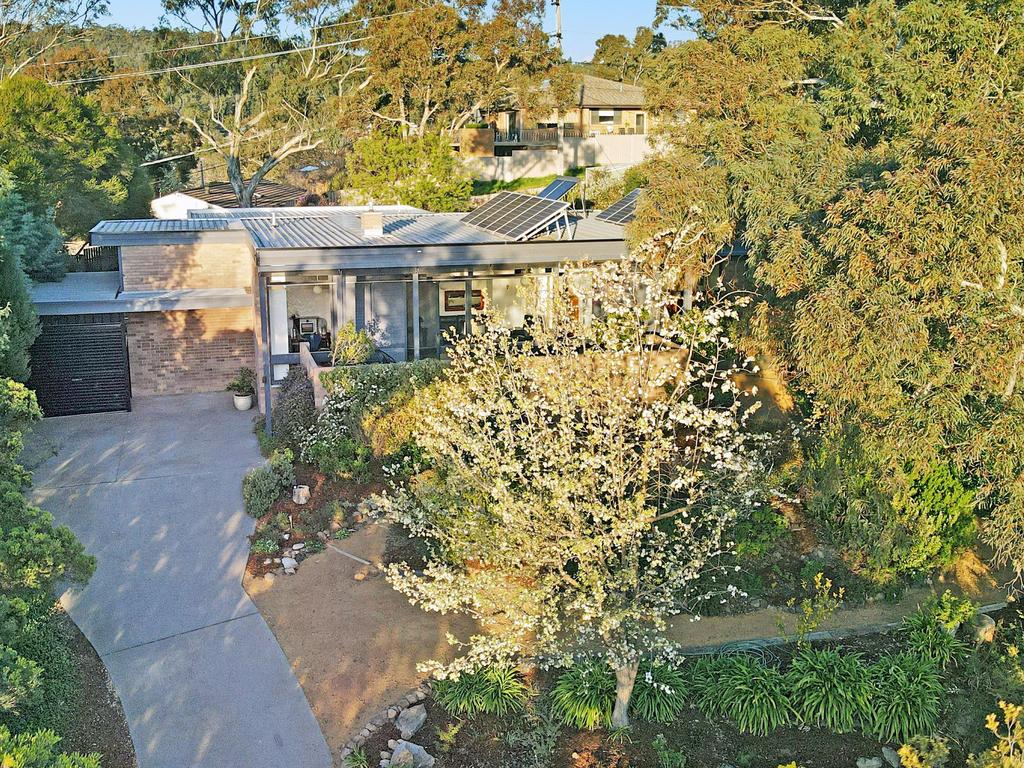
Peace and quiet.
MORE: Top Canberra sales rake in more than $6m
Bespoke abode in Watson to go under the hammer
“It’s one of those homes, as soon as you walk into it you just fall in love with that special feel,” said selling agent Steven Lowe, from Agent Team – Belconnen.
“You feel calm, the deck provides a nice place to relax. I guess that’s why they call Canberra the bush capital.

A gorgeous view.

A peaceful outlook.
“It’s a Roger Pegrum-designed home and what I particularly like about it is that from the kitchen you have views to the west to Mount Taylor and views to the east over the bush reserve, so standing there you get the sunrise and sunset from that one place in the house.”
Built in 1971, the three-bedroom, two-bathroom, split-level home in Farrer offers floor-to-ceiling windows and doors that make the most of the natural outlook.
Perched on a 1184sqm block, the residence has been freshly painted and carpeted. Additional features include a study nook, double glazing and solar panels.

Modern interiors.
“It’s a turnkey property so there’s nothing left to do to it, other than buy it and just enjoy it. Properties like that are rare,” Mr Lowe said.
The home, which is due to be auctioned on Saturday 26 September at noon, is expected to fetch in excess of $1.1 million.
The post Natural landscape holds centre stage in this Farrer delight appeared first on realestate.com.au.


1525 Riverdale Dr, Hope Island.
A GRAND Gold Coast mansion built on 11 titles has sold sight unseen to an interstate buyer who bagged the estate for millions less than it fetched in its heyday.
A $5.75 million contract on the Riverdale Drive residence known as Harbour Point went unconditional last night, with the sale due to settle in December.

1525 Riverdale Dr, Hope Island.
Professionals Vertullo Real Estate agent Mark Carew said the interstate buyer was one of several who made offers to buy the estate sight unseen.
“The borders being closed made it harder for interstate buyers,” he said.
“There were multiple offers from parties outside of the Queensland who see the value.”
The 1800 sqm trophy mansion sits on a 4982 sqm point position making it the biggest residential holding within the prestigious Rosebank Gardens Estate.
The Mediterranean-style home was built by national car-warranty business owner Gary Chuck and wife Suzanne, who fetched $9.39 million when they sold the prize home in 2004.
MORE: Penthouse bigger than most houses hits the market
Australians urged to ‘buy more property now’
Hemsworths put their Malibu home on the market

1525 Riverdale Dr, Hope Island.
The estate was sold again five years later for $9 million, this time to Chinese buyers capitalising on what was a GFC market.
An auction last month saw the property passed in, with $4.5 million the best bid from one of four registered bidders.
The property was then listed for offers over $6.5 million.
Mr Carew said the sale was the highest in the Hope Island Estate this year and the latest in a string of $3 million plus sales.
“This sale is a record for the Hope Island Resort this year,” he said.
“Property on the northern end is really going strong.”

The estate was passed in for $4.5 million at auction last month. Photograph: Jason O’Brien
The new owner intends to renovate the 16-year-old residence before moving in, allaying fears among local residents that the house might be bulldozed.
“It will be renovated and restored to its former glory, maybe even better,” Mr Carew said.
“It is good news for Harbour Point as a lot of people wanted to knock it down, but this buyer plans to restore it.”
The three-bedroom house features towering gilt columns, decorative dome ceilings and ornate balustrades which were in vogue at the time.

1525 Riverdale Dr, Hope Island.
The post Iconic Gold Coast trophy mansion sold to FaceTime buyer appeared first on realestate.com.au.
